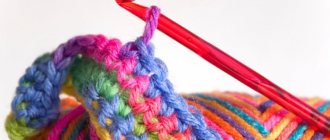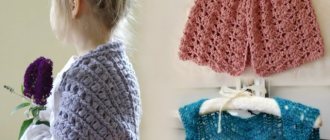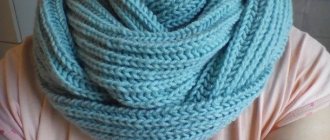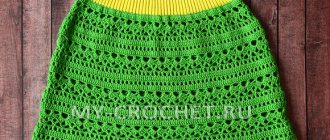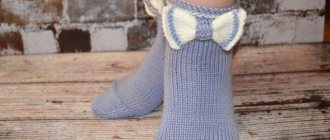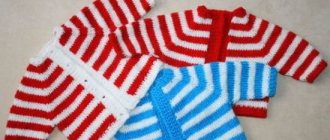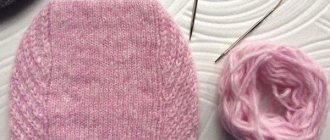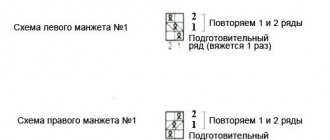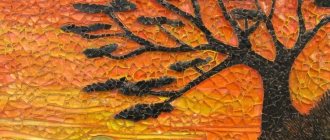There is no way to do without such a necessary thing as a simple washcloth in the household. We simply need it in everyday life. It is impossible to live without it in the bathroom and kitchen. There are many types of washcloths, such as smooth, fluffy, straight, cylinder-shaped, and round. There is a large selection of these products of all types in the trading network, but you can not spend money from your home budget and knit any one you like with knitting needles.
This type of knitting will not require large material costs, because you will only need synthetic threads and knitting needles (hosiery or with stoppers). In this article you will learn how to knit washcloths of several common types. This is a straight, elongated loop (P), a cylindrical and round pipe. Such products are knitted from fairly stiff synthetic yarn. To conclude the article, we will talk about smooth washcloths knitted using fabric strips.
Master class on knitting a straight washcloth from elongated loops
Let's prepare synthetic threads of bright colors, as well as ordinary straight knitting needles No. 3. For the first row (R), we cast on 30 P, and knit 5 P with stockinette stitch. Starting from the sixth P, we will begin to perform extended P. They can be done using two techniques, on the left or on the right hand:
We invite you to watch the following video master class, which gives a complete understanding of knitting elongated loops.
You can perform a front P, alternating 1x1 elongated and regular P. In the next 7th purl P, we knit exclusively with facial loops (LP). We knit the eighth R like the sixth. In the future, it is necessary to alternate rows six and seven, that is, we will do it according to the following scheme until the required length of the product is reached:
Read
We knit a fashionable headdress - the “Gerda” beret
When finishing knitting, you need to make the last 5 P in stockinette stitch, as at the beginning. We will need strings, and we will tie two thin strips. For each we cast on 40 P, and after knitting three P with stockinette stitch, we close the row. We connect the finished lines with a washcloth with threads.
Video: Learning to knit elongated loops
Sisal washcloth
Sisal washcloth
Sisal is a natural fiber that is obtained from the leaves of Agava sisolana. Needlewomen willingly make washcloths from it - for massage and for washing.
How to do it - steps:
- The sisal washcloth should be flat
- To create it, cast on 30 loops and knit or crochet in any pattern. You can even use stockinette stitch if knitting, or single crochet if crocheting
- Fold the edges, first inserting handles from an old washcloth, and sew. You can simply sew handles knitted from the same threads
We suggest you read: How to make a canopy with your own hands. Selection of building materials and location.
Sisal washcloth
Sisal is a natural fiber that is obtained from the leaves of Agava sisolana. Needlewomen willingly make washcloths from it - for massage and for washing.
How to do it - steps:
- The sisal washcloth should be flat
- To create it, cast on 30 loops and knit or crochet in any pattern. You can even use stockinette stitch if knitting, or single crochet if crocheting
- Fold the edges, first inserting handles from an old washcloth, and sew. You can simply sew handles knitted from the same threads
How to knit a washcloth with elongated loops in the round
The tubular washcloth has the shape of a cylinder and is knitted with elongated U made of synthetic threads. To knit it, you need to prepare fairly stiff synthetic yarn of bright colors, as well as stocking needles for knitting in the round:
We begin needlework with a set of 32 P, after which we distribute them onto 4 stocking needles and knit in the round. In this case, there are 8 stitches for each knitting needle. We knit in the same way as in the first master class, alternating stitches with elongated stitches and rows of knit stitches. We knit the first and last stitches with stockinette stitch, as in the first case. At the end we also make thin ropes, or replace them with a thin ribbon that matches the color of the yarn. If desired, you can put foam rubber inside and sew up the ends of the cylinder. The presence of foam rubber inside leads to the fact that it foams well.
How to crochet a washcloth for beginners?
To knit a washcloth, needlewomen prefer a crochet hook. For work, it is better to take a hook No. 4 or larger, because with a smaller one there is a chance that the washcloth will turn out to be too hard.
You need to pay attention to the head of the hook: it should be smooth, because a sharp one can break the thread during knitting.
Using a crochet hook you can knit any patterns: all kinds of floral motifs, arans, Irish lace and much more. But for knitting a washcloth, it is better to choose elementary patterns, namely simple single crochet or double crochet. To make a washcloth, you need to be able to knit an air loop and a connecting post.
We recommend reading:
Bath soap: types, features. Do-it-yourself bath soap: recipes, photos, ideas
Crochet flat washcloth
The simplest option is a regular flat washcloth. This bath accessory can have different shapes: square, round, rectangular. To knit a washcloth, you need to choose a pattern: it is better to make a simple one, for example, from columns with capes. All kinds of ruffles and patterns will get caught and interfere.
Afterwards, you need to cast on the required number of air loops (they should be slightly larger than the planned width of the product), then knit in turning rows until the washcloth is the desired length.
To make it convenient to use, we recommend tying the crossbar and attaching it perpendicular to the washcloth. It’s simple to make: cast on 5-10 air loops and one lifting loop, turn the knitting, in each loop except the lifting loop, knit a single crochet and one lifting loop, knit the remaining rows in the same way until the desired length is obtained.
The flat washcloth can also be double-sided. In this case, you need to cast on twice as many air loops, close them in a ring, and then knit similarly to a regular one-sided washcloth.
Video - how to crochet a washcloth for beginners (step by step):
Crochet round washcloth
Typically, a washcloth of this shape is made in a single layer. It may have elongated loops or not, depending on your preference. If you plan to knit with elongated loops, then it is better to make them on one side, leave the washcloth flat on the other and fasten the crossbar to it.
Knitting pattern for a round washcloth:
Video - crocheted round washcloth:
Crochet washcloths with elongated loops
This type of washcloth is the most popular option. As a rule, it is made long enough with handles on both sides to make it convenient to wash your back. The length of the washcloth is on average 30-35 cm.
Typically, a washcloth is made of two layers; to knit it you need to:
- Decide on the width of the product and cast on air loops 2 times the length.
- Close the connecting loop into a ring.
- Knit three single crochets in a circle.
- The 4th row must be made with elongated loops.
- Knit the 5th and 6th rows with single crochets.
- 7th row - with elongated loops, etc.
- When the required length of the washcloth is ready, you need to make handles: cast on 60 loops and knit three rows of single crochets, attach to the washcloth. Make the same handle on the other side.
Crochet washcloth - diagram and video:
Crochet washcloth-mitten
A washcloth-mitten or kese is a convenient accessory that is often used not only in the bathhouse, but also in the hammam. It is easy to use and great for self-massage.
The difficulty of knitting a washcloth-mitten is that you need to knit your thumb in the product; if such a nuance scares you, then you can make a washcloth without it.
To knit a washcloth-mitten you need:
- Cast on a number of loops equal to double the circumference of your palm at the widest point with a small margin, because then when knitting the next rows, the length of the first will decrease slightly.
- Connect the braid into a ring using a connecting post.
- Continue knitting the selected pattern for 15 rows.
- On the 16th row, knit in a pattern to the place where the thumb will be, there you need to knit 15 chain loops and close them into an arch, skipping 15 loops from the previous row. Then knit in the usual pattern until the end of the row.
- Work 10 more rows or until pinky is covered.
- In the next rows you need to start decreasing, do them every three columns until the last one remains, after which you need to make a knot and cut the thread.
- Knit 7 rows in the thumb area with a pattern, then start decreasing every three stitches.
- Knit a loop of air loops so that the washcloth can be hung.
We recommend reading:
How to knit brooms for a bath?
How to crochet a washcloth - video:
Crochet washcloths
It’s not difficult to decide how to crochet a baby washcloth: you just need to find the toy’s knitting pattern you like and knit its head, then attach it to a ready-made washcloth, and you’re done!
Another option is to knit a mitten and embroider an animal’s face on it. To make it more realistic, you need to choose the appropriate color of yarn: brown for a bear, green for a frog, pink for a pig, etc. You can also additionally knit the ears and attach them to a washcloth.
With such a washcloth, children's water procedures will be much more pleasant and fun for the baby.
Round washcloth with elongated loops
This adorable sponge is very convenient because it has a round shape. When knitting, a garter stitch pattern is used. Let's start working by casting on 20 P on regular knitting needles. We need to make a rectangular-shaped fabric. At the beginning of every second P we add 1 P, and at its conclusion we knit 2 P together once. As a result of this technique, the shape of the product is rounded. Next, dial 5 P for the handle, and knit a strip 15 centimeters (cm) long. We tighten the ends of this cord and sew them together. Then we connect both ends with threads.
Read
Step-by-step instructions for knitting baby booties
Smooth massage sponge made of knitted yarn
This smooth sponge is knitted from strips of fabric that can be made in a variety of ways. But first, let's choose a suitable fabric that won't fray at the edges when cut. When it comes to knitting, it is best to use synthetic pieces of old clothing or tights. It is necessary to choose the largest piece of fabric so that when cutting you get a long ribbon without knots.
There are many ways to cut any piece of knitwear. The first technique involves moving the scissors in a spiral. Cutting a piece from one corner, we move to the nearest corner. In the second corner we turn the scissors and cut at an angle of 90 degrees. So we move, cutting the piece from the edge to the middle. In this case, you need to cut off the corners and ensure that the strips are of equal thickness:
You can cut the fabric into serpentine strips. At the same time, we start cutting from any corner and move to the opposite corner. Not reaching the second edge by a couple of centimeters, turn the scissors 180 degrees and cut in the opposite direction. Using this technique, we cut the fabric to the very end, and you also need to round the corners. We wrap the finished elements into a ball and begin to perform them with a set of 11 P.
Let's make 8 P with a garter stitch pattern.
If you have stripes of different colors, then continue making 10 R with the second shade. Next, go back to the first fabric color.
We alternate the shades of fabric yarn to get this color. Then close the P of the last row and sew three strips to the ends.
We braid a braid from these strips, and make the same braid on the other side of the washcloth.
For taking a shower and going to the bathhouse
Those who love hard washcloths for the body will certainly appreciate this homemade mesh device. Like the previous options, it’s not difficult to make it yourself.
Step-by-step instruction:
- Take the onion net (it is usually elongated), wash it and dry it. The longer the string string, the better.
- Cut off the bottom and carefully cut off the top. You will get something like a sleeve.
- Place your hand through it and roll up the edges.
- At the end we have a bagel, which should be twisted into a figure eight and folded in half.
- Insert a strong thread or twine 30 cm long into the hole and tie it.
- Straighten the mesh edges and the washcloth will take the shape of a rose.
- Form a loop of thread. Pass the end of the twine (10 cm) through the part that holds the mesh. Make a small loop and tie a knot. Now you can hang the washcloth on a hook in the bathroom.
We recommend: How to quickly and easily sharpen a meat grinder knife at home: 1 bad and 2 good ways
A homemade washcloth made from a mesh for vegetables is an ideal option for exfoliating the body (exfoliating the stratum corneum of the skin) and increasing blood circulation. They say that with regular use it helps restore skin tone and reduce the appearance of cellulite.
Using the same instructions, you can repair a purchased washcloth if it suddenly comes loose:
